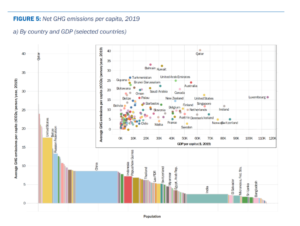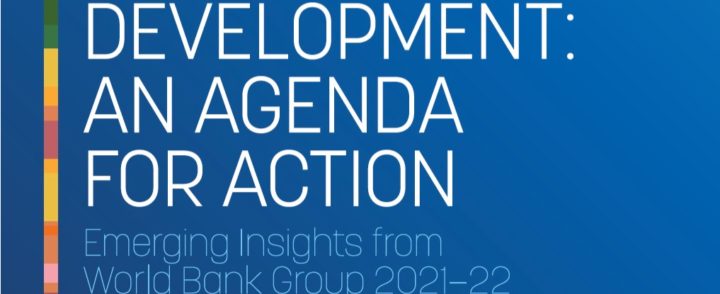Climate and Development : An Agenda for Action – Emerging Insights from World Bank Group 2021-22 Country Climate and Development Reports
Climate change poses a major threat to long-term development objectives, especially poverty reduction, and accelerated emission reductions are needed, particularly in high-income and other high-emitting countries. Reducing emissions can be done without comprising development: taken together, CCDR low-carbon development strategies reduce emissions by 70%, without significant impact on growth, provided that policies are well designed and financing is available. Financing needs average 1.4 percent of GDP, a manageable amount with appropriate private sector involvement. But in lower-income countries, financing needs can exceed 5 percent, which will require more support from high-income countries, including increased concessional resources.
Developing countries face a unique challenge, namely, to achieve their economic development goals in the context of changing climate.
The answers to these questions will affect every sector of the economy and society. In addition, there is no single solution: China’s energy transformation seems very different from Chad’s, and Pakistan’s development priorities are also very different from Türkiye’s development priorities.
This is exactly what the National Climate and Development Report proposed by the World Bank Group wants to achieve. A series of reports are based on the long-term and sustained national participation of the World Bank Group as the world’s leading development institution and a major provider of climate finance for the developing world. Each report has its own unique national context: from the country’s climate commitment and development priorities to its income level and sectoral transformation. These reports take a people-oriented approach, from people living in flooded areas to workers in the coal industry, with the aim of protecting the poorest and most vulnerable groups and promoting a just transition. The report also captures the important role of the private sector in improving economic recovery and reducing emissions. The report also studies the technologies and innovations needed to reduce the carbon intensity of electricity, steel, cement and manufacturing production, and how the world will build a green and efficient supply chain for sustainable development.
As an analytical report, Climate and Development: Agenda for Action draws rich nutrition from the reports of various countries and shares some early insights collected from the first batch of reports. In the countries listed in the first batch of national climate and development reports (CCDR, Country Climate and Development Report), investing 1.4% of GDP in climate adaptation and mitigation on average can improve their resilience and reduce carbon emissions by as much as 70% by 2050. The transformation can also see a positive impact on GDP and employment, but these must be balanced with the loss of fossil fuel intensive sectors, which also affect some populations and communities.

Benefits certainly exist, but they are not readily available: they depend on well-designed policies and more financial support from richer economies. Especially in low-income countries, the investment demand for climate action often exceeds 5% of GDP, and increasing the amount of concessional funds – including through grants – is crucial to achieving goals and a just transition.
The first batch of national climate and development reports showed us that it is possible to solve climate and development problems. It is hoped that all countries can work together to build a road leading to a low-carbon and flexible future.
Source: World Bank



